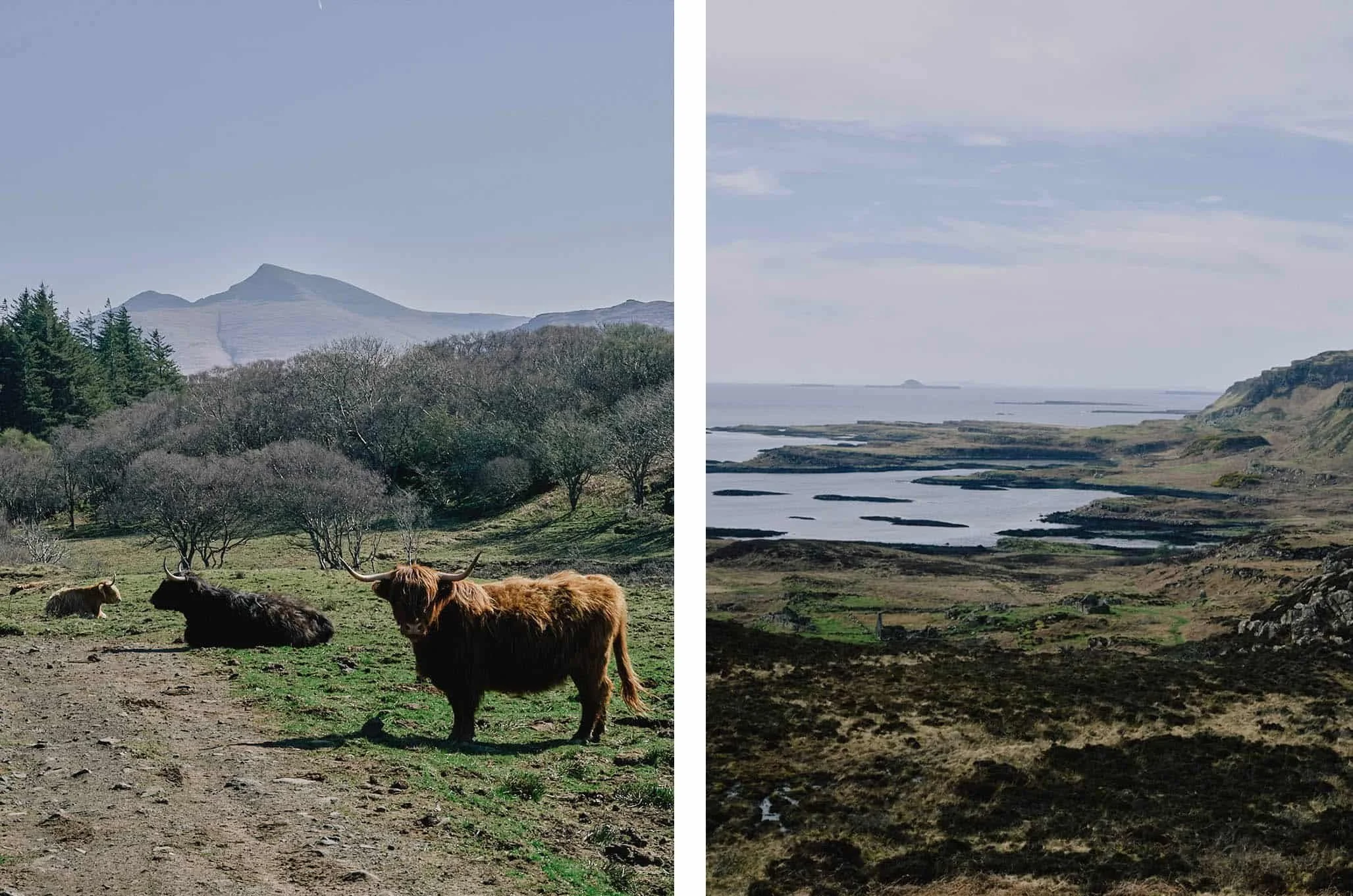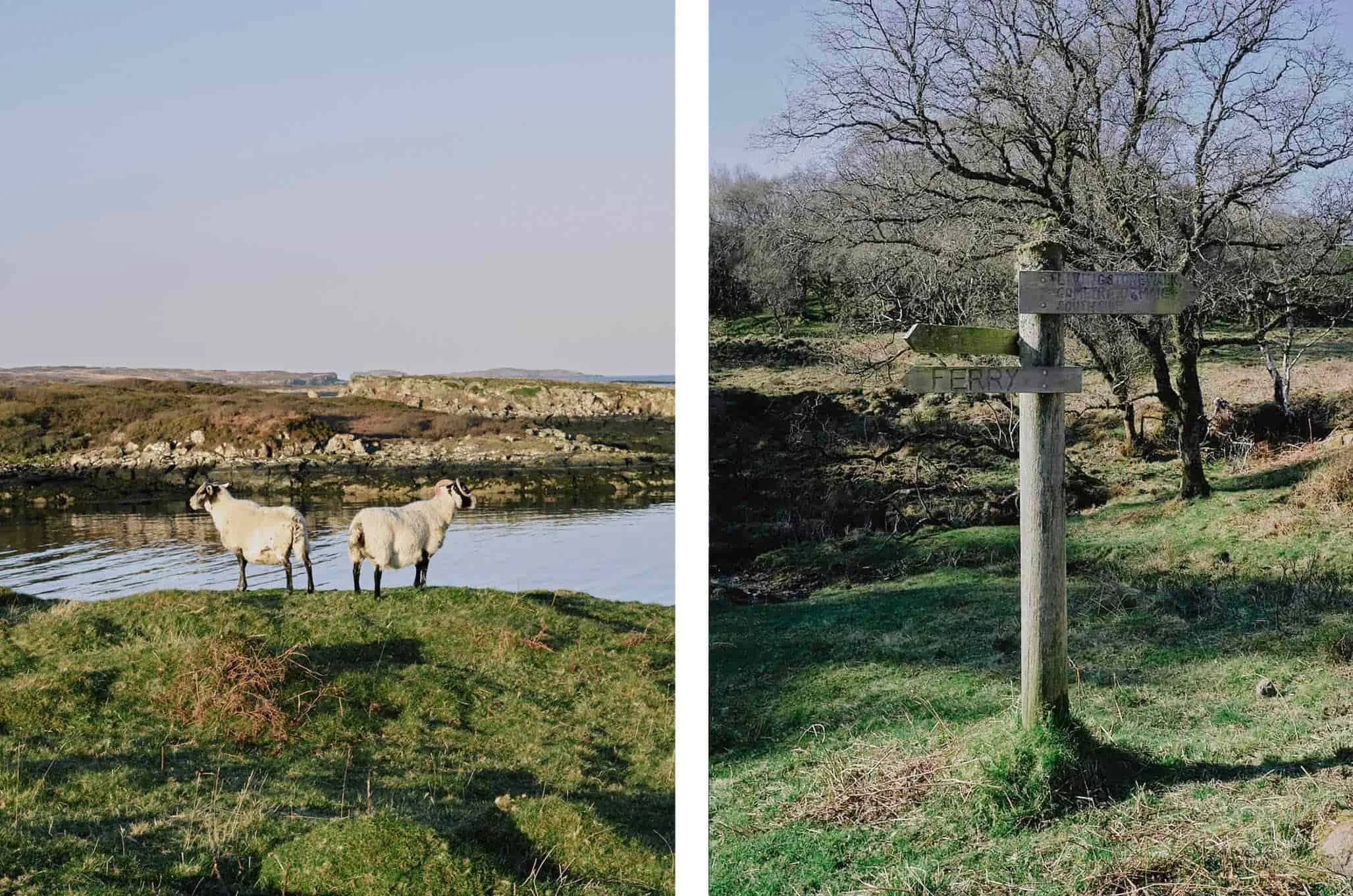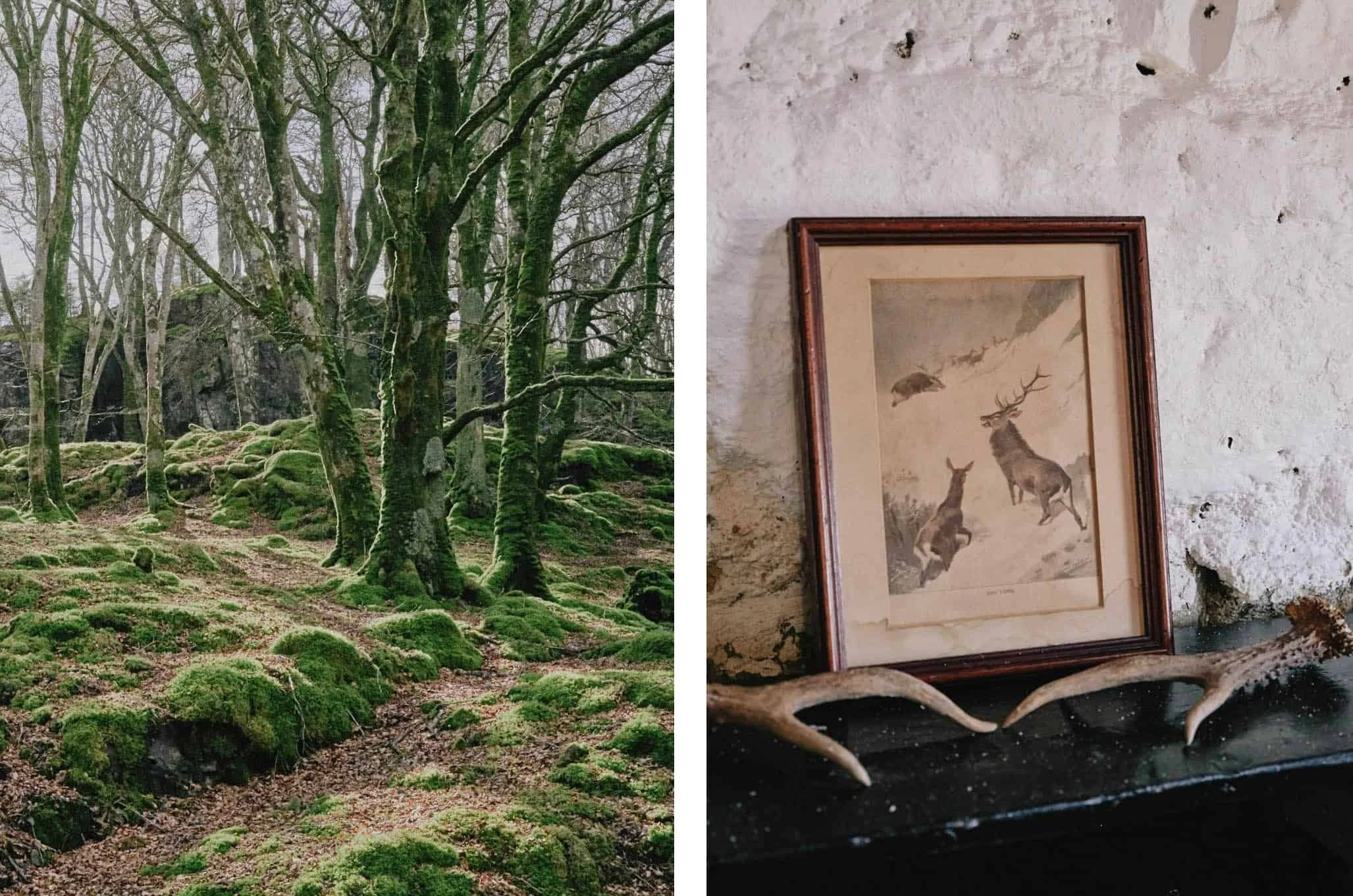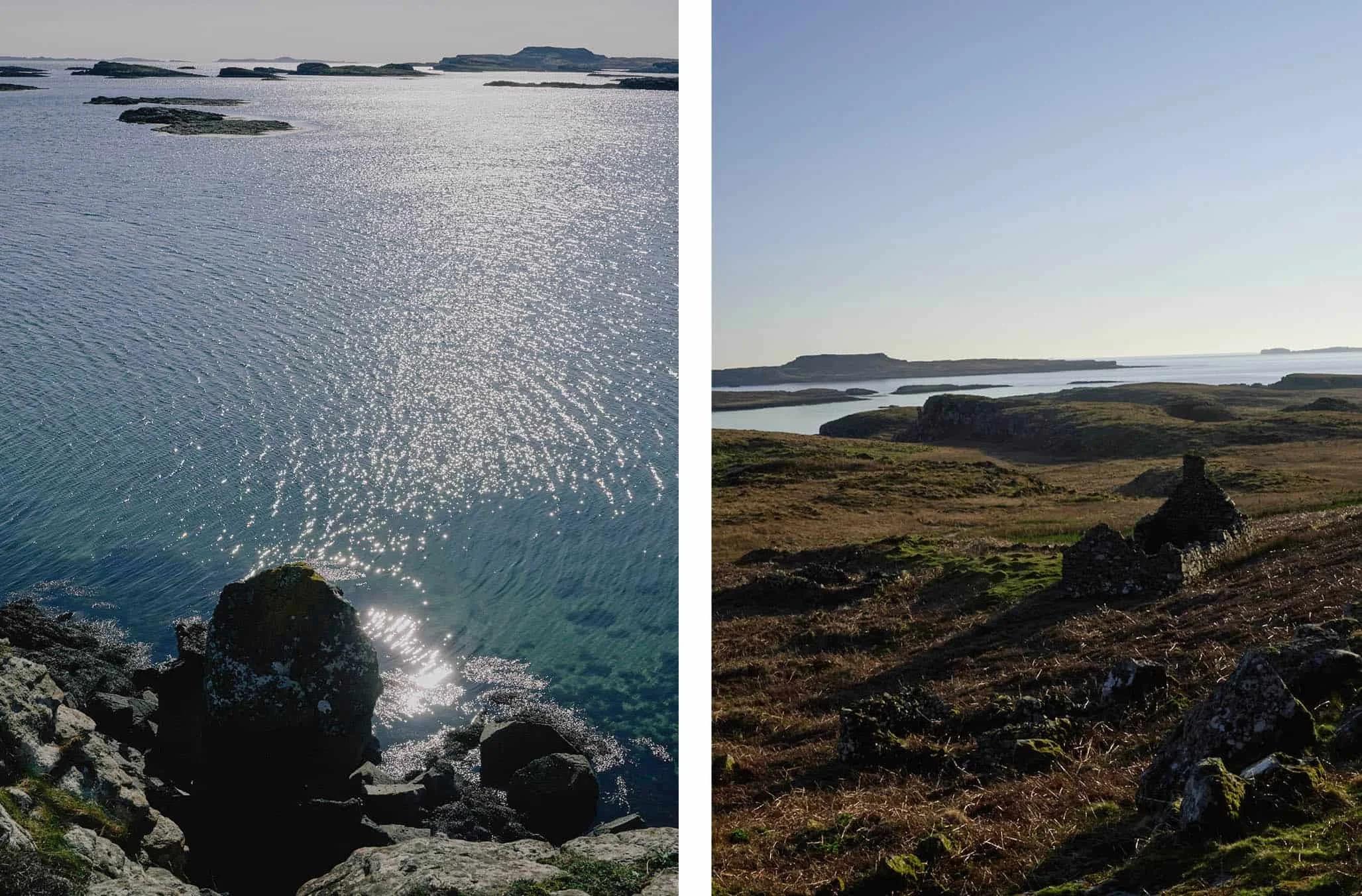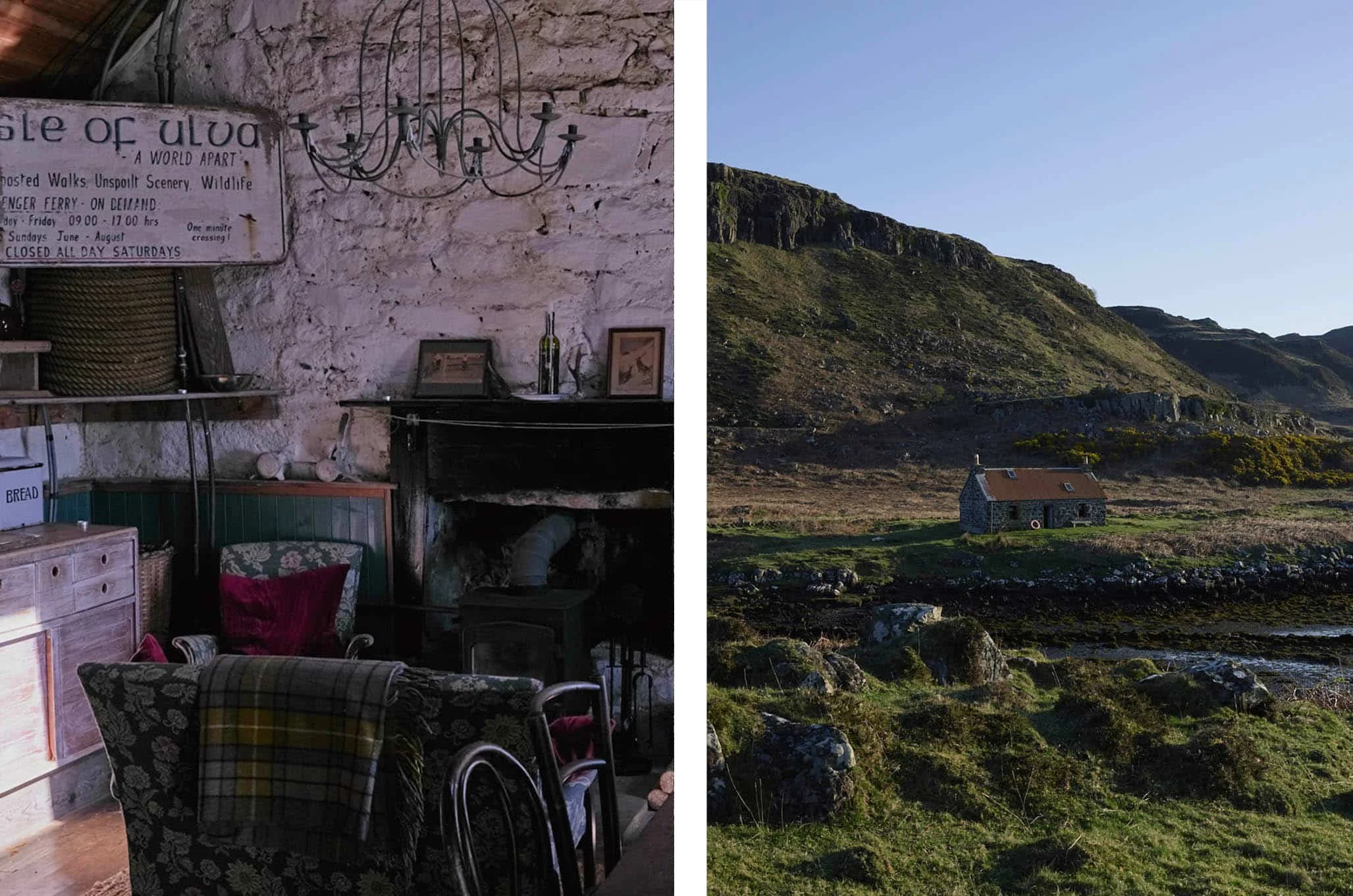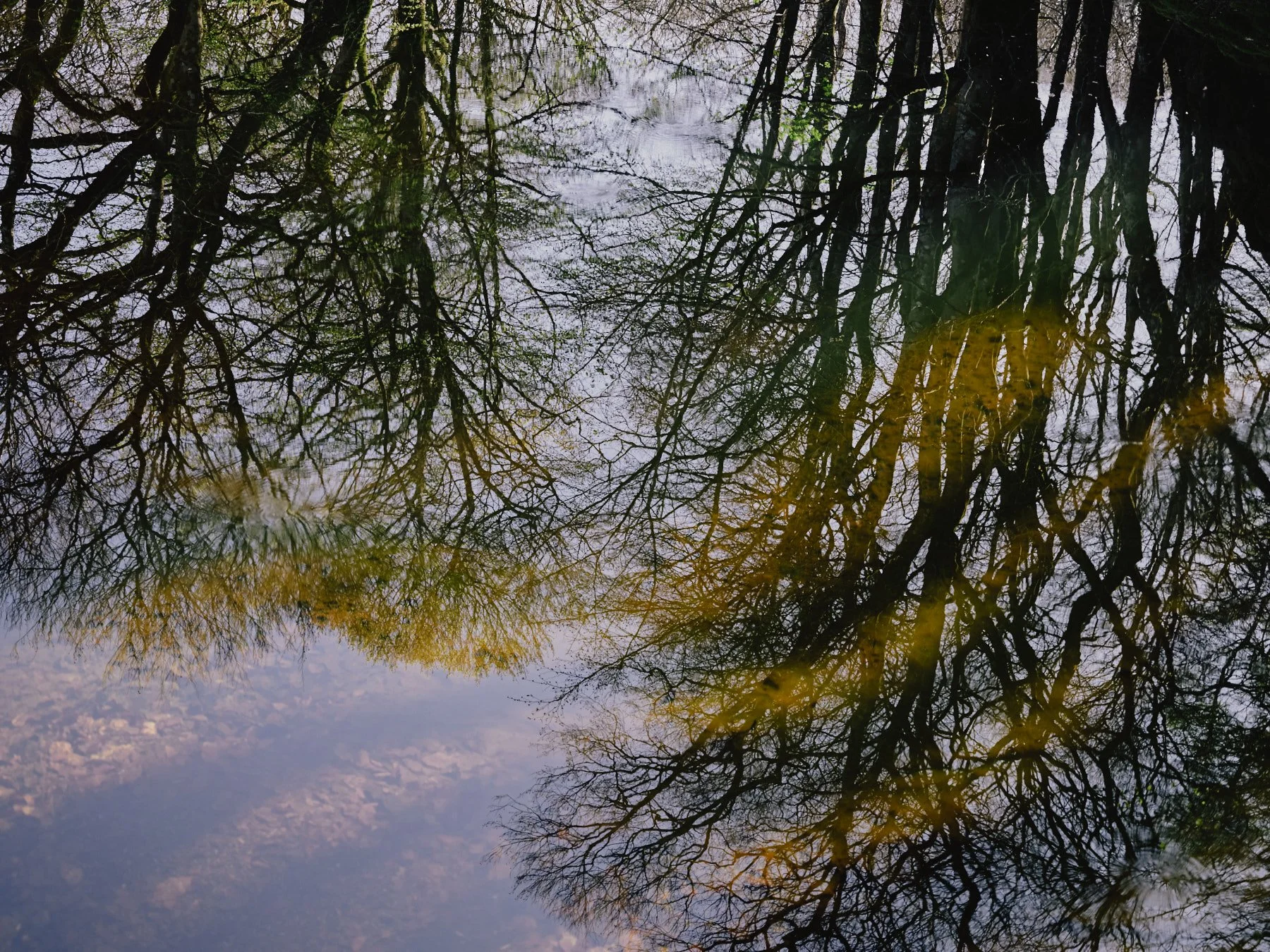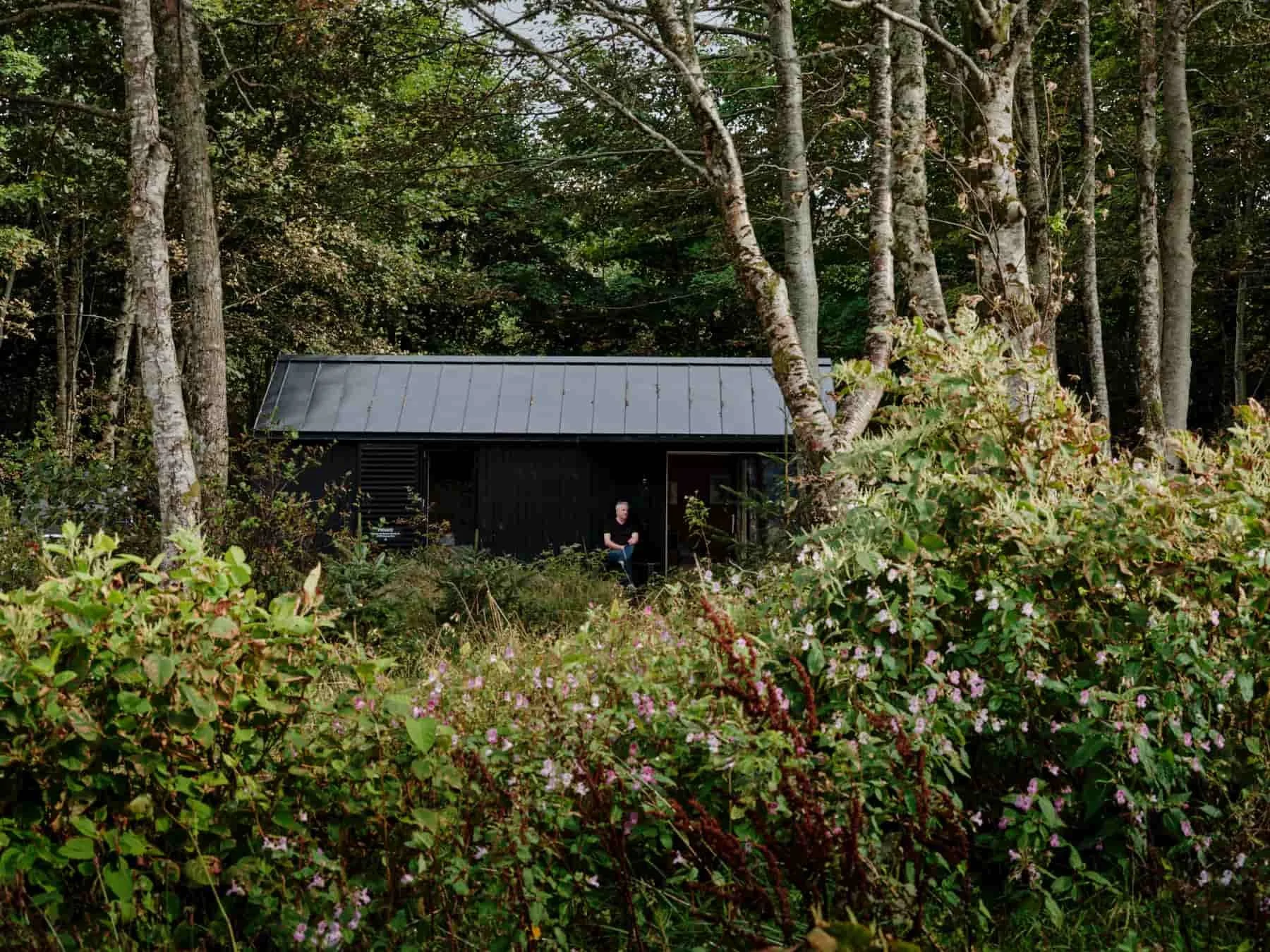Handpicked Guide: The Isle of Ulva, Scotland
Discover the Simple Life on a Peaceful, Car-free Hebridean Island
56°28'50.8"N 6°09'17.9"W (opens Google Maps)
Inside Cragaig Bothy there is a sign that proclaims ‘Isle of Ulva-A World Apart’.
It's a claim that might sound like marketing hyperbole elsewhere, but here, on the stone walls of a bothy on Ulva, it reads as simple truth.
You'll find no cars, no shops, and no tourist information centre on Ulva.
Instead, there is broad–leaf forest, roaming herds of Highland Cows, open space, nesting pairs of White-tailed Sea Eagles, basking seals, walks down leafy lanes, and a sense of peace.
Ulva is community-owned and tranquil—perfect for an off-grid escape.
Whilst the accommodation may be rustic, Ulva is by no means a hair-shirt affair—The Boathouse Cafe, run by owners Sam, Ro, and TV personality Banjo Beale, is gaining a reputation for its fresh seafood.
Ulva is the Inner Hebrides at its most unspoilt and enigmatic—a chance to imagine what travel was like before it became tourism.
The resident herd of Highland Cattle. Right: The remote south side of Ulva.
Why go to the Isle of Ulva?
To feel peace and closeness to nature on a small, unspoilt Hebridean island. To spot White-tailed Sea Eagles, Red Deer, Otters, and Seals. To experience freedom and space on coastal paths. To read by candlelight in an off-grid Bothy at night. To eat fresh Langoustines outside the Boathouse Restaurant on the quay. To wander through long-abandoned Highland Clearance villages in a time capsule of forgotten island life.
View from Ulva Jetty. Right: Rhuri Munro, the second generation Ulva Ferry Master.
How to get to isle of Ulva
From Mull To Ulva
At 3 minutes, the crossing from Mull to Ulva is a contender for the world's shortest ferry crossing.
The ferry operates on demand: Just flip the wooden sign at the jetty to red, and ferryman Rhuri Munro will come and collect you.
The ferry operates from 9 am to 5 pm, April through October. Note that there are no sailings on Saturdays, and Sunday service runs only from June to August.
From Oban to Mull
From Oban on the Scottish mainland, take the car and passenger ferry to Mull. Drive approximately 45 minutes from Craignure along a single-track road that winds alongside Loch na Keal. At Ulva Ferry, vehicles must be left on the mainland of Mull, as no cars are allowed on the island. There is parking available for visitors.
Book your crossing to Mull at CalMac Ferries.
Sheep on the south side of the Island. Right: Walking tracks on Ulva are signposted.
Getting around the isle of Ulva
Ulva is a unique, car-free experience.
On foot: To walk Ulva’s leafy, unsurfaced lanes is a pleasure in itself.
By bike: You can take your bicycle on the ferry for £2. A mountain bike is strongly recommended as the tracks on Ulva are rough.
By kayak: Experienced paddlers can explore Ulva's dramatic coastline independently, accessing hidden coves and sea caves, with frequent seal encounters. Kayaks can be launched from the Ulva Ferry slipway.
Ulva ferry approaching the jetty.
The Essentials: the isle of Ulva
When to Go
April 1st-October 25th for ferry access. June-August adds the Sunday ferry service and more visitors. April/September for fewer visitors with decent weather odds.
Mon-Fri 9.00am-5:30pm, Sundays Jun-Aug only. Signal from Mull pier, 3-minute crossing, £8 return. No service on Saturdays, weather dependent.
Good to know
There are no shops on Ulva. The nearest place to stock up is the Spar at Salen on Mull.
There is a public toilet (portaloo) near the ferry jetty on Ulva.
There are a couple of electric hook-up points for small motorhomes at the ferry jetty on Mull.
If staying overnight on Ulva, you can park your car for free at the ferry jetty on Mull (arrange with your accommodation).
Recommended
Arrive early morning for wildlife and solitude. The Boathouse Restaurant serves exceptional seafood, island farm meat, fresh bread, and coffee. Nature immersion in the broad-leaved forest. Wildlife spotting: White-tailed Sea Eagles, Red Deer, Seals, Otters. Coastal walks on the south side of the island for big views, wilderness and fewer people. Stay off-grid in a bothy for a peaceful retreat in nature. For the adventurous: Walk to Geometra, Ulva’s wild and remote sister island and stay the night at a bothy.
Broad–leaved forest. Mantelpiece detail in a bothy.
Itineraries for the isle of Ulva
Short: Walk to Ulva Church and Ulva House.
The shortest and simplest walk on Ulva follows leafy lanes linking the Boathouse Cafe, Ulva House, and Ulva Church. See the 2.5-mile circular route on walkhighlands.co.uk
Medium: Walk to Livingstone’s Cave.
A historic cave that was first inhabited 8,000 years ago. Named after the explorer David Livingstone, whose parents lived in the island. This varied circuit includes a walk through broad-leaved forest, a visit to Ulva House and basalt columns on the coastline.See the 4.75 circular route on walkhighlands.co.uk
Long: Walk to Ormaig.
An out-and-back route that explores the beautiful southern coast of Ulva. The walk passes through a broad-leaved forest and the abandoned ruins of Ormaig and Kilvekewen Clearance villages. This walk has spectacular sea views and is the most beautiful walk on Ulva. See the 8-mile out-and-back route on walkhighlands.co.uk
All walks begin and end at the ferry jetty, where the Boathouse restaurant is located. The walks are signposted, but directions can be vague in places.
A typical track on Ulva. Right: Ulva Church.
What to see on the isle of Ulva
Nature. Ulva is teeming with life. The island is home to nesting pairs of White-tailed Sea Eagles, which can be commonly seen along the coast of Ulva. There are Golden Eagles, Hen Harriers, and the rare Scotch Burnet moth that is only found on a few west coast islands in Scotland. Highland Cattle and Red Deer roam the island, and there are sightings of Mountain Hares and Otters. Porpoises, Seals, Dolphins, and Whales swim in the waters. Puffins are said to nest on the coast, although I didn't see any on my visit. Rare butterflies make their home on the island with over 500 species of plants, including rare Orchids.
Livingstone's Cave. Named after David Livingstone, whose grandfather built a house nearby. Archaeologists from Edinburgh University are still excavating here, unearthing hearths, tools, human and animal remains from when the cave was first inhabited 8,000 years ago.
Abandoned Villages. Wander through abandoned Highland Clearance villages such as Ormaig, Cragaig, Ballygown, and Ballymeanach. Ruins from a time when the island supported 600 people in 16 small villages.
Ulva Church. A modest yet striking whitewashed building, designed by Thomas Telford in 1828. Services are rare today, but the church still anchors the community's history.
Gometra. Ulva's wilder sister island can be reached by an 8-mile walk to cross a footbridge or by boat. Staying here is an adventure: fewer visitors, just raw Hebridean landscape and the sea on all sides. An island. Off an island, off an island. gometra.org.
A bay on the South side of Ulva. Right: An abandoned croft from the Highland Clearances of the 18th and 19th centuries.
Ulva House. A short distance inland from the ferry, you'll come across the largest building on the island – Ulva House. This is a 1955 reconstruction after a devastating fire destroyed the older Ulva House, largely unaltered and architecturally significant. Its early predecessor was the seat of Clan MacQuarrie and was where the father of Australia grew up.
Neolithic Standing Stone. Ulva's solitary standing stone is the mute legacy of a pre-Celtic people who lived on Ulva around 1,500 BC and vanished before the Vikings arrived.
Sheila's Cottage. A restored traditional thatched cottage and serves as Ulva's museum and heritage centre. The cottage was temporarily closed when I visited.
Starvation Terrace, Aird Glass Point. This row of low houses was built for those left behind after the Clearances — too old or infirm to emigrate. Living off seaweed and shellfish, they gave the place its grim name. Today, it stands as one of Ulva's most poignant reminders of hardship.
Ro Beale stands outside the Boathouse Restaurant.
Where to eat on the isle of Ulva
Situated next to the ferry jetty, The Boathouse, run by Sam, Ro, and TV personality Banjo Beale, serves up a menu based on whatever the fisherman land on their doorstep — you can expect lobster, langoustines (Scottish prawns) and crab alongside freshly baked bread, seasonal salads, island farm meat and freshly baked bread and coffee. They also know their wine, as I picked up a bottle from them for provisions for my bothy stay.
Monday-Friday 9am-5pm (lunch served from 12:30pm). Sundays 11am-5pm (June, July & August only). Bookings are not accepted.
For more details see theboathouseulva.com
The Interior and exterior of Cragaig Bothy.
Where to stay on isle of Ulva
With its wilderness and beautiful coastline, Ulva is a great place to go off-grid. There are two bothies available to rent on the island, Cragaig on the south side and Bearnus on the north side. Both are reached by a 4-5 mile walk from the ferry jetty.
Book Cragaig Bothy at islandholidaycottages.com
Book Bearnus Bothy at airbnb.com
Both properties are off-grid and offer basic but cosy accommodation with no electricity, no neighbours, and unlimited peace.
There are also 2 Mongolian Style Yurts available, and a range of accommodation at the House of Ardalum Hostel. For more details, see ulva.scot
View of the South side of Ulva – Cragaig Bothy is on the left.
A Short History of the usle of Ulva: An Ancient Isle Reborn
This 5,000-acre island's dramatic history spans nearly nine millennia—from Stone Age settlements to a remarkable 21st-century renaissance.
-
The standing stones on Ulva hint at Neolithic farmers who may have traveled up Scotland's western waterways millennia ago. But human presence reaches far deeper into prehistory. Excavations at what's now known as Livingstone's Cave have uncovered Mesolithic shell middens and artifacts dating back to 5,650BC—evidence of continuous occupation spanning nearly eight millennia.
This remarkable archaeological site, named after explorer David Livingstone whose grandfather left the island in 1792, continues to yield discoveries. Shell middens, flint tools, and fragments of bone from lemming, Arctic fox, and human remains tell the story of Scotland's earliest islanders.
-
The Vikings were not the island's first residents, but they left their mark on both landscape and language—Ulva derives from the Old Norse "Ullamh," meaning "wolf island." Ulva came into the possession of the Clan MacQuarrie (an anglicised version of the surname MacGuaire) family over a thousand years ago, and they controlled it until the mid-19th century. The MacQuarries became one of Scotland's most powerful clans, with Ulva as their ancestral stronghold.
-
In 1785 Ulva was purchased by a pioneer of the kelp burning industry and his son, Staffa MacDonald ws reputed to have 'trebled his income and doubled his population by careful attention to his kelp shores'. The island flourished, its population swelling to over 600 souls harvesting seaweed for the lucrative kelp trade.
But prosperity was fleeting. The new laird was the infamous Francis William Clark. He undertook large scale and rapid clearance of the resident population in the 1840s. As in other areas, Ulva was impacted by the Highland Clearances of the 18th and 19th centuries, with many residents being removed from the island during that period. Families who had lived there for generations were evicted, their homes destroyed, their communities scattered across the globe—including the Livingstons, whose descendant David would later explore Africa.
-
Ulva's haunting beauty has long attracted illustrious visitors. In its heyday, the island welcomed literary giants James Boswell and Samuel Johnson during their famous tour of Scotland, as well as the beloved children's author Beatrix Potter, who sketched the dramatic coastlines and ancient ruins in the early 20th century. These landscapes would later influence her cherished illustrations, though her Ulva studies remained largely private works.
The island's most poignant connection may be to David Livingstone, the legendary African explorer whose grandfather had left Ulva in 1792 seeking employment. When Livingstone visited by yacht in 1864, hoping to find traces of his family's history, he discovered nothing—yet another reminder of how the Highland Clearances had severed so many ancestral ties. Today, many residents from Mull and far beyond can still trace their family lines back to this remarkable island.
-
By 2017, the Isle of Ulva population had dwindled to just six people as waves of depopulation nearly erased centuries of human presence. Yet from this nadir came renewal. The 5,000-acre island, which has 16 residents, was bought from its private landlord in 2018, with a grant of £4.4m from the Scottish Government's Land Fund.
The island is now run by North West Mull Community Trust, marking a new chapter in Ulva's ancient story. Where Highland Clearances once emptied the land, community ownership now nurtures its revival. The island that witnessed the rise and fall of clans, the coming of Vikings, and the persistence of Stone Age peoples, continues to write its remarkable history—one that spans from prehistoric shell middens to modern community ownership, from Beatrix Potter's sketches to ongoing archaeological discoveries in Livingstone's Cave.
Today's visitors walk not just through stunning landscapes, but through layers of human story stretching back to the very dawn of Scottish civilization.
Early morning on the south side of Ulva.
Books on the islE of Ulva
As It Was: An Ulva Boyhood by Donald W. Mackenzie—collected fragments of oral history, folklore, hearsay and legend, blended with Mackenzie’s own reminiscences and recollections to weave a history of Ulva, an evocative read that will transport you back to a time when there were very few left living on the island. (Even fewer than there are today).
Resources for The isle of Ulva
.
RELATED POSTS
